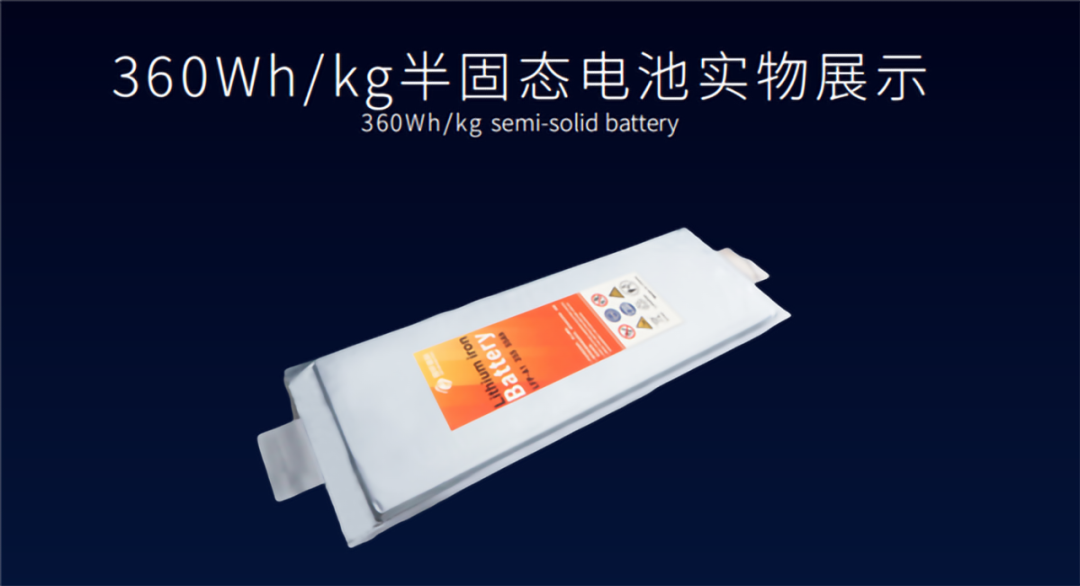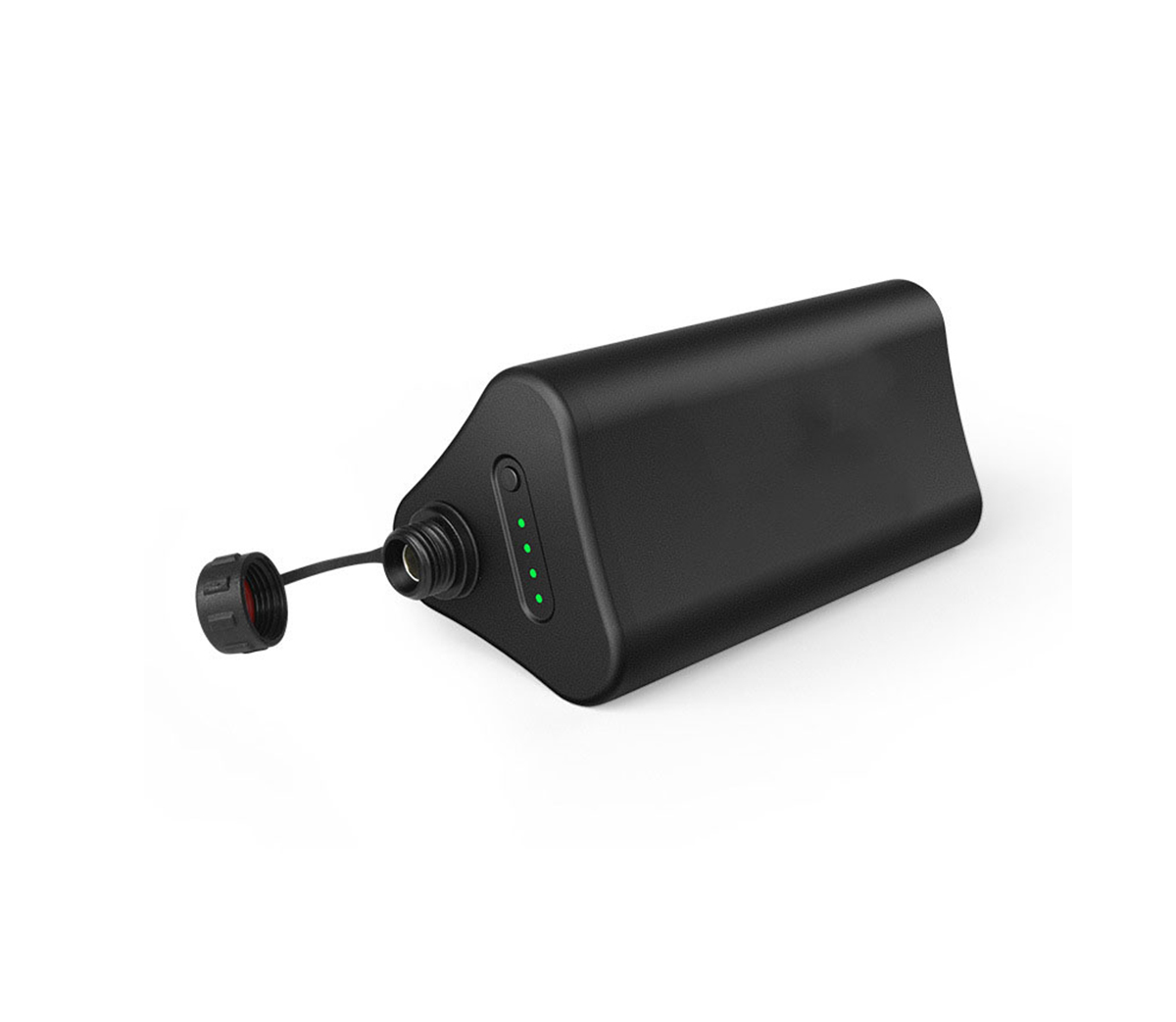For electric vehicles, people's anxiety is mainly focused on battery life,
but this anxiety is not destined to last long, because the technical iteration
of power batteries has been getting faster and faster. As a manufacturer with
rich experience in both power lithium batteries and energy storage lithium
batteries, SES Power has been paying attention to the technological development
of lithium batteries, such as sodium-ion batteries, lithium titanate batteries,
etc. The requirements of the market are getting higher and higher and the market
opportunity window is very short. We are more interested in technologies that
can change the pattern of the lithium battery industry in a short period of
time, such as the transitional product of solid-state lithium
batteries—semi-solid lithium batteries.
Does semi-solid lithium battery solve the problem of energy density? the
answer is negative.
I believe everyone has a basic understanding, that is, whether lithium iron
phosphate or ternary lithium batteries, the existing mass-produced power
batteries are liquid electrolytes. In addition to the relatively low upper limit
of energy density, it also has an obvious shortcoming, that is, the risk of
thermal runaway - the continuous occurrence of spontaneous combustion events of
electric vehicles is largely due to this reason.

So, with the high energy density of semi-solid lithium batteries, will the
risk of thermal runaway become higher? the answer is negative. Because it has
been confirmed by scientific experiments that in most cases, the less liquid
electrolyte in the battery, the less heat is generated when spontaneous
combustion occurs, and only repeated charge and discharge lead to the generation
of dendrites in the electrode, and then when the battery is short-circuited, the
spontaneous combustion of different batteries occurs. The heat is equal.
Another benefit is that the semi-solid lithium battery can reduce the
weight of the vehicle. Measured by the current parameter of 360Wh/kg claimed by
some manufacturers, the energy density of the existing ternary lithium battery
has been increased by nearly 40%. If the capacity increase of the battery pack
is not considered, the weight of the battery pack can be reduced by one-third.
One or so, and the weight of the battery pack occupies a large share of the
weight of the electric vehicle.
The weight reduction effect of the whole vehicle brought about by the
battery downsizing can significantly improve the battery life, which is a very
simple reason.

At the same time, there is also an expected benefit, that is, with the
reduction of the amount of battery cells in a single vehicle, the corresponding
cost will also be reduced accordingly. In this regard, there is currently no
clear data support in the industry. SES Power believes that semi-solid lithium
batteries will definitely not be cheap in the early stage of mass production.
Only with the realization of the premise of greatly improving the degree of
industrialization, the comprehensive cost advantage in the middle and later
stages will become more and more. more obvious.
Of course, since solid-state lithium batteries are not the only path for
power batteries, semi-solid lithium batteries are only a transitional product
form, and their industrial cycle is basically similar to that of current liquid
electrolytes.
The industry has a clear plan for the technical path of power batteries
represented by lithium batteries. According to the classification of
electrolytes, lithium batteries have to go through four stages of development:
liquid, semi-solid, quasi-solid and all-solid, and the latter three belong to
the category of solid-state lithium batteries. At this stage, the industry is
about to usher in the spring of semi-solid lithium batteries, and all-solid
lithium batteries are the final form. We expect that there is still a very long
way to go.
At a forum in March this year, some Chinese experts gave a very clear
development node for solid-state lithium battery technology: if
industrialization is used as a measure, the energy density will reach 350Wh/kg
in 2025, and the semi-solid state of solid-liquid mixed electrolyte will reach
350Wh/kg. Lithium batteries appear; in 2030, the energy density will reach
400Wh/kg, and quasi-solid-state lithium batteries with less liquid electrolytes
will be mass-produced. The real all-solid-state products are expected to be no
more than 1%; the energy density target in 2035 is 500Wh/kg, and all-solid-state
lithium batteries realize industrialization.
SES Power believes that ordinary lithium batteries will not be withdrawn
from the market because of the emerging solid lithium battery technology,
because ordinary lithium batteries are more flexible and lower in cost. Let us
recall that when lithium batteries are gradually mature, nickel-metal hydride
batteries and lead-acid batteries are considered to be outdated technologies and
will be completely eliminated by lithium batteries. In fact, they have their own
market fields and division of labor. For example, the energy storage products we
launched use square aluminum-shell lithium iron phosphate batteries that can
perfectly replace lead-acid batteries. These products can be used in power and
energy storage applications. The maximum current reaches 2000A output, the
voltage covers 12V to 560V, and the capacity from 1KWh to 1MWh, it covers
lead-acid replacement, industrial supporting, UPS, RV, solar energy storage,
home energy storage and other fields. However, where they cannot fully replace
nickel-metal hydride or lead-acid batteries, peripheral factors and cost have
become the dominant factors.
Europe, the United States, Japan and South Korea have an earlier R&D
layout in the field of solid-state lithium batteries. For example, Mercedes-Benz
and Nissan aim to start mass production and installation in fiscal year 2028.
BMW and Toyota plan to achieve stable mass production in 2030 (Toyota plans to
pilot hybrid vehicles in 2025). As for South Korea, it seems to be more radical.
LG New Energy even plans to achieve mass production of all-solid-state lithium
batteries in 2026, and Hyundai Motor will achieve partial mass production by
2027.
Of course, no matter when these car companies will realize the mass
production of all-solid-state lithium batteries, SES Power believes that
semi-solid and quasi-solid are both processes that must be experienced - it
should be noted that semi-solid and quasi-solid are not a fixed product Form,
because each car company has different progress in research and development
progress, even if they are called "semi-solid lithium batteries", due to the
difference in negative electrode materials and electrolytes, there are also
differences in energy density in the end.
A well-known electric vehicle company in China disclosed at the end of last
year that it will be equipped with so-called solid-state lithium batteries that
can last for 1,000 kilometers on new models. This successfully aroused people's
curiosity. Although it was later confirmed to be a semi-solid lithium battery,
the publicity effect was very good, because people were deeply impressed by the
term "solid lithium battery". Of course, the fundamental reason is because it
has more advantages in energy density and safety than current mass-produced
lithium batteries.
For example, the record of recent investor relations activities disclosed
by Ganfeng Lithium in mid-May clearly stated that the semi-solid lithium
battery, which is expected to gradually release 2GWh of production capacity this
year, is the first-generation product, and the energy density of the monomer is
actually the same as that of the current liquid electrolyte. The ternary lithium
battery is at the same level (260Wh/kg).
In contrast, in the news announced by Gotion Hi-Tech at the end of May, the
single energy density of semi-solid lithium batteries reached 360Wh/kg, and the
system energy density was 260Wh/kg. In addition, the ternary semi-solid lithium
battery with a monomer energy density of 400Wh/kg of Gotion Hi-Tech also has
laboratory prototype samples.
As the next-generation power battery technology after 2025, solid-state
lithium batteries are now the high ground for all battery companies in the
world, but semi-solid lithium batteries are the first big test that every player
must face.
From the standpoint of consumers, we need to be more rational. Because
according to the analysis, from 2025 to 2030, it is the golden period for
semi-solid lithium batteries to achieve great development. No matter who is the
first step in the car companies, consumers have not yet switched to this track.
You don't really get the full benefits of such a battery, such as the cost of
purchase. Only when most manufacturers have launched corresponding products and
the entire industry starts to iterate on technology, can semi-solid lithium
batteries really enter various industries.




































